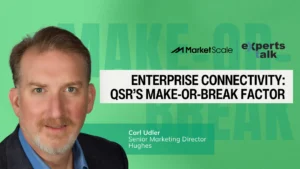The Evolution and Revolution of Pasteurization
A Look Back at Pasteurization
As a method of food and beverage preservation, pasteurization has a long and rich history spanning more than 1000 years. As far back as 11th century AD, it’s theorized that the Chinese used a process similar to pasteurization to preserve wine—filling hot clay jars with fresh wine, covering with leaves, sealing with mud, then burying the jars in the cool soil. To avoid soy sauce spoiling on long voyages by sea to Europe, 16th century Japanese boiled the product in an iron pot, funneling it into bottles that were immediately sealed. In 1768, an Italian priest and scientist, Lazzaro Spallanzani, proved that significant heat could be used to kill microorganisms when he boiled meat broth for an hour, then hindered the reappearance of said microbes by hermetically sealing it within a container.
Flash forward to a few decades later when a Parisian chef and confectioner, Nicolas Appert, invented a new method of preserving food by placing food in glass jars that were sealed with a cork and wax, then placed in boiling water. This innovation won him a cash prize in 1810 for his work in providing safe, boiled, hermetically-sealed jars of preserved food to the French military–money that he used to open the world’s first food bottling factory two years later. While Appert’s method did kill microbes in the various foods that his factory bottled and canned, including milk, the science wasn’t exactly perfect. Appert boiled for longer periods and higher temperatures than would later be deemed necessary—resulting in changes in taste and often, broken bottles. An Englishman, Peter Durand, improvised an iron can with a thin layer of tin surrounding the exterior which could better withstand the boiling process, receiving the first patent for the idea of preserving food using tin cans from King George III of England.
But it wasn’t until the mid-1800’s that the science was perfected. In 1856, French scientist Louis Pasteur was commissioned by the father of one of his University of Lille students to figure out the reason a certain beetroot alcohol was souring. After examining samples under a microscope, Pasteur discovered that the presence of Acetobacter aceti, a rod-shaped microorganism that converts alcohol to acetic acid, was to blame for producing the sour or vinegary taste often linked to bad beer and wine. And a few short years later in 1862, the scientist came to the same conclusion—most likely unknowingly—as the 11th century Chinese: gradually heating and rapidly cooling wine neutralized the offending germs responsible for affecting its flavor.
Around this same time, at the behest of Emperor Napoleon III to save the French wine industry, Pasteur curated his heating and cooling process, saving the wine from souring while preserving its original flavor by heating it to a meager 122°-140°F. He patented this process in 1865, which was quickly adopted by the wine industry, and the term pasteurization was coined.
With a long history of unbiased killing in its wake, tainted food and beverages have taken their toll on mankind. Its rumored that the deaths of Alexander the Great, King Henry I, President Zachary Taylor, and even the entire first Jamestown settlement can be attributed to salmonella or some other type of food or beverage poisoning. And milk-borne illnesses, from tuberculosis to salmonella, typhoid fever, diphtheria, and many others, killed millions of people every year for centuries. Today, however, thanks to Louis Pasteur’s pasteurization process, the number of foodborne illnesses attributed to dairy products has greatly reduced. Pasteurized dairy products are 840 times less likely to cause illnesses than their unpasteurized counterparts.
To Pasteurize or Not to Pasteurize, that is the Question
The International Dairy Federation (IDF, 1986) defines pasteurization as a process applied with the aim of avoiding public health hazards arising from pathogenic microorganisms associated with milk by heat treatment which is consistent with minimal chemical, physical, and organoleptic changes in the product. Unlike sterilization–which kills all microorganisms but adversely affects product quality and taste–in pasteurization, not all microorganisms in food are eradicated. Rather, the heating of substances up to 140°–194°F achieves a ‘log reduction’ in viable organisms like bacteria, viruses, protozoa, molds, and yeasts, reducing their numbers to an amount not likely to cause disease, while maintaining product quality and taste.
Regardless of its seemingly beneficial advantages, the process of pasteurization has been debated since Pasteur’s patent, with some early wine distillers complaining that his new heating method marred the wine’s taste and bouquet. While a panel of wine experts settled in his favor, the controversy over pasteurization continues today, specifically as it relates to milk. A grassroots alliance of farmers, organic-food enthusiasts, and non-profit advocacy organizations argue that the heat used in pasteurization reduces the health benefits and unique taste of milk. However, the Centers for Disease Control and Prevention, the U. S. Food and Drug Administration, the dairy industry, public-health officials, and most scientists maintain that the process’ ability to kill disease-causing germs far outweighs taste and health property considerations. In fact, the FDA has debunked several myths, stating that the life-saving process of pasteurization does not reduce milk’s nutritional value, nor cause lactose intolerance and allergic reactions.
The Processes of Pasteurization
Many foods undergo pasteurization today, including eggs, milk, meats, juices, spices, nuts, and ice cream. Pasteurization temperatures and times are determined depending on the product and by what is deemed necessary to eliminate the targeted pathogenic bacteria and more heat-resistant disease-causing microorganisms. A High-Temperature-Short-Time Treatment (HTST) process uses higher heat for less time to kill pathogenic bacteria, while a Low-Temperature-Long-Time Treatment (LTLT) process uses lower heat for a longer time. Times and temperatures depend on the type of food and the final result to be achieved, such as retaining food’s nutrients, color, texture, and flavor.
Flash pasteurization is a high-temperature, short-time treatment used for pourable products, such as juices. Liquids are heated for up to 15 seconds to a temperature that will eradicate unsafe microorganisms, then cooled and packaged, allowing for extended unrefrigerated storage while providing a safe product. Irradiation pasteurization subjects’ foods like poultry, red meat, spices, fruits, and vegetables to small amounts of gamma rays—both controlling vegetative bacteria, and parasitic foodborne pathogens while increasing the storage time of foods. Used to pasteurize nearly 50% of U.S. beef, steam pasteurization uses heat to control or reduce harmful microorganisms. Products are passed through a chamber that applies steam for a specific amount of time at a specific temperature, raising the surface temperature significantly, then cooled with a cold-water spray, thereby reducing pathogenic bacteria without the use of any chemicals.
Pasteurization Also Plays a Part in Almond Processing
When almonds are harvested, the trees are shaken, causing the nuts to fall to the orchard floor where they are left for 8 to 10 days to further dry. With birds, foxes, pests, pigs, and wild boar roaming orchards, it is during this time on the ground that almonds are exposed to contaminants. In the early 2000’s, almonds were discovered to be the origin of two salmonella outbreaks. As the source of more than 80% of the world’s almond supply, the Almond Board of California consequently asked the U.S. Department of Agriculture to implement a rule that requires raw almonds grown in California’s Central Valley to be pasteurized to prevent future outbreaks, resulting in the USDA’s 2007 issuance of the “almond rule.”
Traditionally, almonds are pasteurized via a fumigant process, wherein polypropylene oxide (PPO)—a gas, essentially—is introduced into a chamber containing almonds where it sits for a designated amount of time. The PPO then liquefies and evaporates, ridding almonds not just of potentially harmful microbes, but of insects and insect larvae as well, without diminishing the nutritional value and sensory attributes of the almond. Considered a mild central nervous system depressant in humans, the EPA classifies propylene oxide as a Group B2-probable human carcinogen, stating that those exposed to PPO can experience eye, respiratory tract, and skin irritation. And further testing in animals has resulted in inflammatory lesions of the nasal cavity, trachea, and lungs, neurological effects, as well as tumors. Although considered exceedingly safe, this process has garnered negative attention by consumers as a non-organic and potentially dangerous method of almond pasteurization.
Used widely throughout the beef industry, steam pasteurization was approved by the FDA as an effective means of pasteurizing almonds. In this process, almonds are driven into a steam pasteurizer where steam is heated to supersaturation which then condenses on the product, ‘fluidizing’ the nut, and a shaking mechanism ensures that all surfaces are exposed and treated equally. While prolonged exposure to steam can increase the moisture content of the nut, reducing the structural integrity and affecting the nut’s flavor, with careful processes in place, these effects can be avoided. Steam pasteurization effectively reaches all organisms on the nut’s surface and crevices, ensuring the target pathogens are inactivated while achieving the necessary 5-log reduction that safeguards against harmful bacteria.
Select Harvest Introduces Controlled Steam Condensation to Their Processes
By law, the almond is the only nut, seed or dried fruit that requires pasteurization. Widely debated worldwide, the U.S. is the only country that requires that almonds be pasteurized. This law has led to much dissension among American farmers and consumers who believe older methods of steam pasteurization affect both the texture and taste of raw almonds, while PPO pasteurization is considered by some as inorganic and possibly unsafe.
Located in the heart of California’s Central Valley, Select Harvest is one of the largest almond producers in the world. With over 30 years of experience growing, processing and providing a wide variety of almond products, Select Harvest adheres to Federal and State regulations while remaining both socially and environmentally conscious. With a reputation for honesty, commitment, integrity, and quality above all, Select Harvest seeks to find processes that advance the science of almond processing to ensure that their almonds are as organically safe and as true to their natural form as legally possible. Enter Laitram Machinery’s CoolSteam® nut pasteurization technology.
Select Harvest is excited to announce the addition of the super advanced Laitram CoolSteam® system to their almond pasteurization processes. The result of decades of research and development, Laitram Machinery’s CoolSteam® technology features an extremely gentle, all-natural, continuous-flow process to achieve a verified 5log+ reduction of salmonella without sacrificing almond quality. Accepted by the Technical Expert Review Panel (TERP) of the Almond Board of California and meeting today’s rigorous BRC, CFIA and FDA food safety and sanitary design requirements, CoolSteam® Pasteurizers utilize a forced-convection steam technology that precisely controls temperatures below boiling point and uniformly applies a steam-air mixture to the different types of nuts, eliminating target pathogens.
“We are evolving as a company. The addition of the cool steam pasteurization system is a very major attribute—a gamechanger, if you will, when compared to some of our competition and what we’re capable of doing now,” says Select Harvest’s Sales and Marketing Manager Richard Andonian. “Older wet steam pasteurization results in soggy almonds, while PPO processes can take 10-11 days. Our new CoolSteam® pasteurization is done almost instantaneously, shortening the process, allowing for product to be packed the same day.”
Laitram’s CoolSteam® system preserves the natural texture and color of the nut, actually improving the flavor of the raw product and reported to extend the shelf life of almonds. This advanced technology has the power to dramatically change the way the world pasteurizes nuts, and Select Harvest is proud to be at the forefront of this pasteurization revolution.









